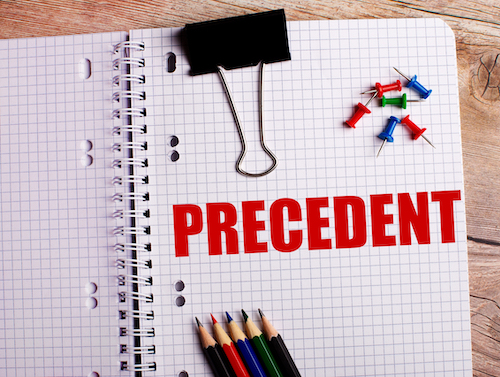Strategies for Using the Hague System
“Using the Hague process strategically can open new filing options for design filers, not just for international design registration but also for their U.S. design patents. But despite its inherent benefits, the system’s complexity cannot be overlooked.”
The number of design applications filed through the Hague System for the International Registration of Industrial Designs continues to grow, with an 18.8% increase in annual filings reported in 2022. The Hague system, which covers 96 countries, offers numerous advantages for applicants and presents some interesting strategic options for filing in the United States as well.
How the Hague System Works
A Hague design application is registered through the World Intellectual Property Organization (WIPO) and may designate one or more Hague members—including the European Union (through the EU Intellectual Property Office [EUIPO]), China, the United States, Japan, Korea, the United Kingdom, Canada, and the list goes on. The application can be filed through WIPO’s eHague filing interface or through an “office of indirect filing” (such as the U.S. Patent and Trademark Office [USPTO]).
After filing, WIPO completes an examination for formalities only. The application will be published and then proceed to the designated offices, where substantive examination (e.g., for novelty) will be performed if required by the member country. However, unlike Patent Cooperation Treaty (PCT) national phase entry, the application will stay with WIPO and communication to/from designated countries will pass through WIPO for the life of the application and granted design right. This feature provides several advantages, as we will see shortly.
Advantages of the Hague System
To participate in the Hague system, an applicant must show at least one entitlement to file from a member country. An entitlement can be any of: nationality, domicile, habitual residence, or real and effective industrial or commercial establishment. This means, for example, that a client in Taiwan with a habitual residence in Japan (member country) is eligible to file through the Hague!
What’s more, that same client can appoint a practitioner in any Hague member country (e.g., the United States) to represent them in the application. They do not need to appoint a representative for each country designated—and in fact many designs grant without ever having to appoint a local representative in the granting country.
In addition, the applicant can control the timing of publication (depending on which members they have designated). While the standard publication now occurs at 12 months, immediate publication may be requested or publication may be deferred by a specified number of months up to 30.
Additional benefits of centralization through WIPO include the ability to file in English no matter which countries are designated, saving the applicant translation fees for most regions. Data updates, such as to the applicant’s contact information, can be handled with one notification to WIPO. Annuities for all designated countries can be handled as a single payment to WIPO, and are only due every five years instead of annually for many conventional cases.
It’s Good to Have Options
Consider an applicant that is interested in filing both in the United States and with other Hague members. They have several filing routes available:
A. First filing in the United States
When a design application is filed in the United States, a priority filing can be made through the Hague within the six-month design priority window. Multiple related U.S. designs (up to 100!) can be the subject of a single Hague filing if the designs are in the same Locarno classification (the international classification for industrial designs). Filing one or more design applications first in the United States may make sense where a U.S. foreign filing license is needed if the client wants to delay publication of the design(s) or if they are using the Rocket Docket acceleration process.
Having a pre-filing discussion with the applicant regarding filing through the Hague within six months can help position the U.S. filing for a smooth transition to Hague. Plans to designate specific countries may impact decisions like which drawing views to include, the style of drawings, choice of title, and descriptive language included in the specification. Some cases may benefit from having a foreign associate review the drawings before filing the U.S. case.
B. Entering the United States through the Hague
A Hague design application can designate the United States just as any other member country. Designating the United States through a Hague application can help control timing of examination in the U.S. case, as by rule, the USPTO must submit examination results to WIPO within 12 months of publication of the design.
The USPTO will also be required to accept the drawings, as long as they have passed the WIPO formalities examination (including photographs, 3D renderings, and other non-black and white line drawing types). However, keep in mind that the USPTO may still issue rejections for lack of enablement.
In a case having multiple designs, standard restriction practice will apply at the time of examination in the United States. However, deferring the filing of divisional applications until a restriction requirement is received can be used to defer some filing costs and decisions regarding the commercial importance of patenting the designs.
C. Using a Hague application for priority in the US
In some cases, the applicant may choose to file the Hague application first (such as when a public exposure is imminent and available time to prepare a first filing is short). One or more U.S. applications can be filed up to six months later claiming priority to the Hague application.
In conclusion, the Hague system provides many advantages to applicants seeking worldwide design protection. Using the Hague process strategically can open new filing options for design filers, not just for international design registration but also for their U.S. design patents. Despite its inherent benefits, the system’s complexity cannot be overlooked. Planning for international design registration early in the patenting process will allow applicants to take full advantage of the opportunities offered by the Hague System.
Image Source: Deposit Photos
Author: BrianAJackson
Image ID: 24533575






